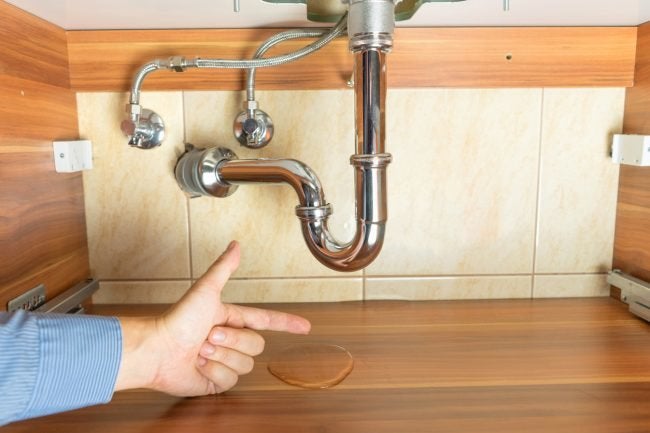Detecting Concealed Water Line Leaks: 6 Clever Methods
Detecting Concealed Water Line Leaks: 6 Clever Methods
Blog Article
Presented here in the next paragraph you can find a lot of high-quality details when it comes to Hacks to detect leaks.

Early detection of dripping water lines can minimize a prospective disaster. Some little water leaks may not be visible.
1. Take A Look At the Water Meter
Examining it is a guaranteed method that assists you find leakages. If it relocates, that shows a fast-moving leakage. This implies you may have a slow-moving leak that could even be below ground.
2. Check Water Consumption
If you find unexpected changes, in spite of your intake being the same, it means that you have leakages in your plumbing system. An unexpected spike in your bill shows a fast-moving leakage.
Meanwhile, a constant increase monthly, even with the very same habits, reveals you have a slow-moving leak that's additionally slowly escalating. Call a plumber to extensively examine your building, specifically if you feel a cozy area on your flooring with piping underneath.
3. Do a Food Coloring Examination
When it concerns water consumption, 30% comes from bathrooms. Examination to see if they are running appropriately. Drop flecks of food color in the tank and also wait 10 minutes. There's a leakage in between the storage tank and also bowl if the shade somehow infiltrates your bowl during that time without flushing.
4. Asses Outside Lines
Do not neglect to check your outdoor water lines also. Test faucets by affixing a garden hose pipe. Must water permeate out of the link, you have a loosened rubber gasket. Replace this and also ensure all links are limited. It will help get it professionally examined and also kept annually if you've got a sprinkler system. One small leakage can lose lots of water as well as increase your water expense.
5. Check as well as Analyze the Situation
Property owners must make it a practice to examine under the sink counters and even inside cabinets for any bad odor or mold development. These two warnings show a leakage so timely attention is called for. Doing regular inspections, also bi-annually, can conserve you from a major problem.
More significantly, if you recognize your home is currently old, maintain a watchful eye on your heaters, tubes, pipes and so on. Check for stainings and also weakening as most pipelines and also appliances have a life span. They will additionally normally weaken because of deterioration. If you think dripping water lines in your plumbing system, don't wait for it to intensify. Call a professional plumber today so you do not wind up with a terrible mess in your home.
Early discovery of leaking water lines can alleviate a prospective catastrophe. Some tiny water leakages may not be noticeable. Checking it is a guaranteed means that assists you uncover leakages. One little leakage can lose bunches of water and also spike your water bill.
If you think dripping water lines in your plumbing system, do not wait for it to rise.
WARNING SIGNS OF WATER LEAKAGE BEHIND THE WALL
PERSISTENT MUSTY ODORS
As water slowly drips from a leaky pipe inside the wall, flooring and sheetrock stay damp and develop an odor similar to wet cardboard. It generates a musty smell that can help you find hidden leaks.
MOLD IN UNUSUAL AREAS
Mold usually grows in wet areas like kitchens, baths and laundry rooms. If you spot the stuff on walls or baseboards in other rooms of the house, it’s a good indicator of undetected water leaks.
STAINS THAT GROW
When mold thrives around a leaky pipe, it sometimes takes hold on the inside surface of the affected wall. A growing stain on otherwise clean sheetrock is often your sign of a hidden plumbing problem.
PEELING OR BUBBLING WALLPAPER / PAINT
This clue is easy to miss in rooms that don’t get much use. When you see wallpaper separating along seams or paint bubbling or flaking off the wall, blame sheetrock that stays wet because of an undetected leak.
BUCKLED CEILINGS AND STAINED FLOORS
If ceilings or floors in bathrooms, kitchens or laundry areas develop structural problems, don’t rule out constant damp inside the walls. Wet sheetrock can affect adjacent framing, flooring and ceilings.
https://www.servicemasterbyzaba.com/blog/how-to-detect-water-leakage-in-walls/

Hopefully you enjoyed reading our article on Finding hidden leaks. Thanks a lot for taking the time to read through our piece of content. So long as you enjoyed our article please be sure to pass it around. Thank you for your time spent reading it.
Schedule And Pricing Report this page